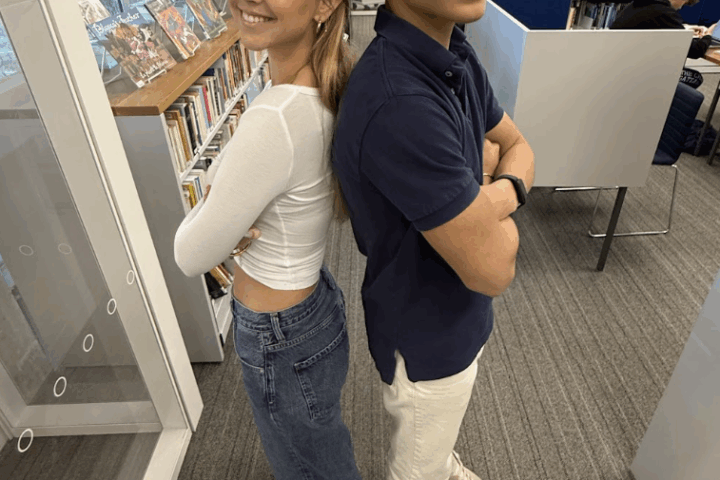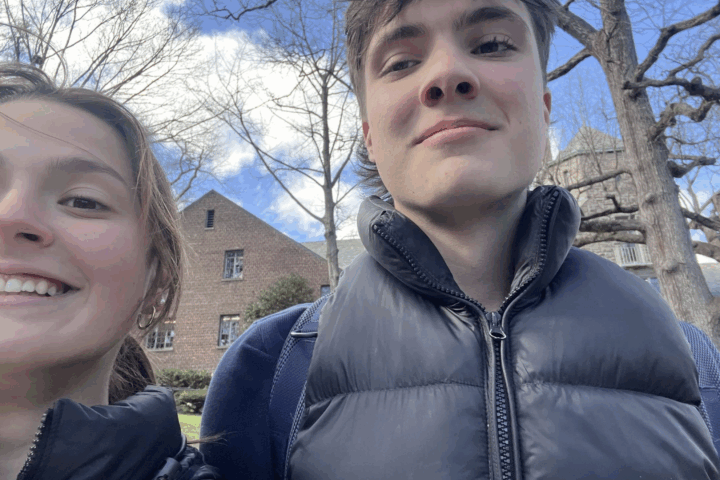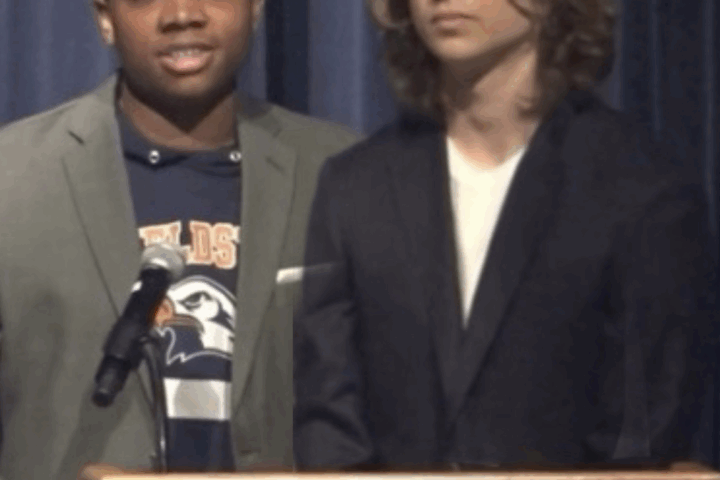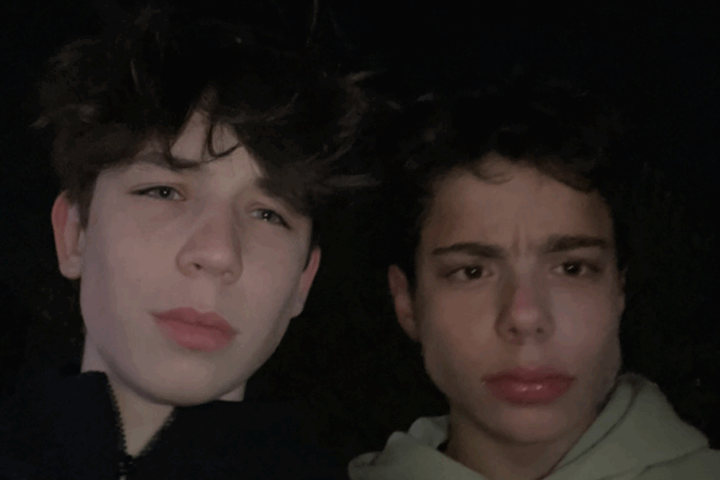A Day of Danes: 22 Danish Students Visit Fieldston with their Social Studies Class
On the evening of March 13, my co-president, Tess McGarvey, and I, were about the only people praying for there not to be a snow day the next day. Our wish came true: on the 14th, the doors of Fieldston Upper opened not just to the usual students and faculty, but to a group of 22 Danish students who Tess and I were honored to welcome to our school.
Hailing from Aarhus, Denmark’s second biggest city, the students, 17-19, are in their second of three years at a public high school, or gymnasium, called Marselisborg Gymnasium. They came to New York City for a week with their Social Studies class, so in addition to visiting the run-of-the-mill tourist hotspots (think Times Square and the Brooklyn Bridge), they took a close look into American society, its triumphs and its pitfalls. “We went to New York to understand how America is built up, what your country stands by, what the American dreams consist of, and what the pros and cons of that are,” wrote students Bella Hostrup and Line Bugge Svensson. They visited Fieldston, which they discovered on a podcast, to holistically examine the American education system – they also visited the Bronx School for Law, Government and Justice, a public school just 6 miles away in the South Bronx. The disparities between the schools turned out to be as they expected: glaring.
After a long bus ride up to school, Tess and I received the Danish visitors in principal Stacey Bobo’s office. We instantly noticed their chic fashion sense, near perfect English and great manners. They started their day in groups, attending 4 different elective classes: the Harlem Renaissance, Asian American History, Rise of the Right in American Politics, and City Semester. A group presented to Dr. Chang’s section of the Harlem Renaissance elective on their school and Danish social systems, such as education and welfare.
Half the visitors then went to Tess’ advisory, and the other half to mine. Fieldston students flocked to these two rooms, eager to meet the visitors – my advisory hosted at least thirty kids. It was absolute pandemonium. Many Fieldston students were not only eager to learn about their culture but to befriend them – we chatted about everything from politics to food and music.
When the period ended and the crowds finally dispersed, Tess and I gave the st45-minute45 minute tour of the high school. We poked our heads into art classes and a packed Tate library. We even absorbed a few enthusiastic Fieldston students into our tour group on the way.
We concluded the tour in the varsity gym. The previous night, and that morning, Tess and I had been spreading the word about an American football tournament during A band. More than a few friends of mine showed up to teach the visitors how to play. We then scrimmaged, Americans vs. Danes, for about 15 minutes, until we all decided we’d rather play “the real football.”
Sweaty and tired, we headed back towards the quad to sit in on a few more classes: another section of the Harlem Renaissance, World Literature, US History, and the Science Behind Climate Change. A group presented to the Harlem Renaissance class on similar topics as the first group. We then walked over to the film lab, where Mr. Buskey showed some of his favorite student films from over the years and talked about his program. For our last visit of the day, the Danes joined us for lunch in the cafeteria, sitting and gossiping with us at long tables as if they were full-time Fieldston students.
Throughout the day, the students noted stark differences between Fieldston and their gymnasium in Aarhus. They were pleasantly surprised by our community’s hospitality, the quality of our facilities, and were constantly remarking that they would not expect students at their gymnasium, or any in Denmark for that matter, to be as welcoming as we were. “We all thought that you were very sweet and thought about how we ourselves welcomed newcomers,” said Bella and Line. They were less impressed by our attire, and were surprised to see so many students in baggy sweatpants, sweatshirts, and pajamas. Some students also noted major pedagogic differences – they were shocked that teachers expressed their political biases so openly in classes. Such a thing would be illegal in Denmark, they told us.
In spite of the distance, they thought the Bronx Bronx School for Law, Government and Justice was perhaps even more distinct from Fieldston than their gymnasium was. The Danish students told us that some of them said they had “never seen white people before.” They said many of the students did not speak fluent English, and were not particularly hospitable to them. Bella and Line describe the visit: “At Fieldston we got to see the beautiful and kind America. At the public school we saw how the American Dream can become a nightmare. They did not have anything and did not feel like they belonged in either our company or America.” Bella and Line noticed that these students thought less of the US and the American Dream than Fieldston students did. They said the visit provided a “grim and awful perspective of America.”
Though their visits to the two schools were particularly telling, the Danish students had been perceptive to class and racial disparities their entire visit. They described to me the shock of leaving an area with high end stores and residences where everyone was white to enter an adjacent neighborhood with run-down buildings and almost no white people. Such juxtaposition, by design, barely exists in Denmark, which is 96% white and, thanks to a steep wealth tax and robust social services, much less socioeconomically diverse than the US. When I asked one student if he’d rather live in New York or Denmark, he said “I’d rather be rich in New York than live in Denmark. But I would not like to be poor in New York.”
Tess and I, along with the rest of the high school, dreaded saying goodbye to our new Danish friend. But Tess and I agreed to keep in touch and to try to see each other at least one more time before they left. Sure enough, we met up with them a few days later. I received numerous Instagram messages from the Danish students after we said goodbye. I have kept up an on-and-off correspondence with a few of them. Now I know who to call if I’m ever in Aarhus!









